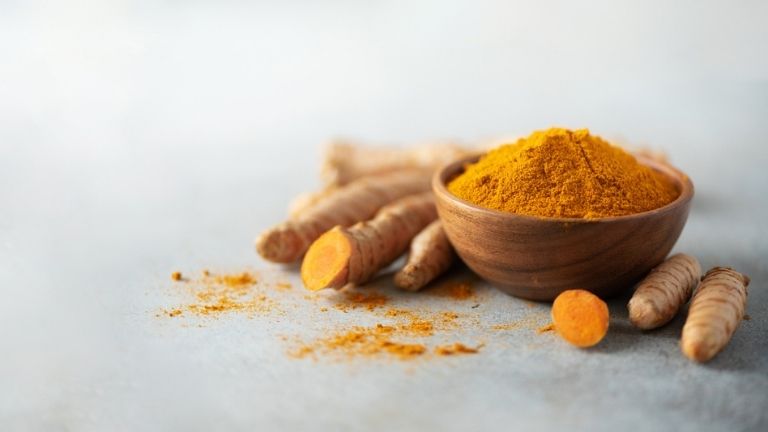Taking painkillers for a prolonged period can cause adverse effects. Professional footballer Thomas ‘Hal’ Robson Kanu reveals which 5 natural substances can offer pain relief
When pain first strikes – whether it’s a toothache, backache, or a sports-related injury – our first instinct is usually to head straight to the medicine cabinet.
The problem is, that not only are painkillers ineffective at resolving an issue, they can also have a number of negative side effects, as seen on that small booklet inside your painkiller packet.
Long-term use of painkillers can also be devastating for some of your organs
Long-term use of painkillers can also be devastating for some of your organs, such as your stomach, liver and heart, and can have some serious adverse effects.
If any kind of pain is holding you back from reaching your full potential, whether it’s at work, in your fitness goals, or anywhere in between, try adding these five natural and most effective pain-relieving substances t your diet.
Here’s what will help to get you back on track – or even back on the tracks – in no time….
#1 Cloves
Cloves, like other herbal supplements, can be used to treat a variety of ailments.
Cloves may be used to relieve nausea and colds. They may also aid in the relief of pain from headaches, arthritic inflammation, and toothaches.
Cloves and clove oil have long been used as a toothache treatment by dentists
Cloves can be bought whole, but for pain-relieving purposes can be bought in powder form, or can even be found in many topical rubs that are commonly used as pain relief for toothache.
Since the 19th century, eugenol, a chemical found in cloves, has been used in dentistry. Cloves and clove oil have long been used as a toothache treatment by dentists as well as being available from most pharmacies for use at home.
Cloves should not be used as a long-term solution for toothache, though, as this can have adverse effects on your gums.
#2 Ginger
Ginger has two anti-inflammatory chemicals that operate synergistically. These are gingerols and shogaols, with the latter being more effective and found mostly in dried ginger.
The root is widely used in Asian cuisine, and many people have discovered that it can help with inflammation, rheumatism and osteoarthritis.
If you have any of the above diseases, ginger may provide comfort thanks to its anti-inflammatory properties.
it can help with inflammation, rheumatism and osteoarthritis
The ginger’s capacity to suppress leukotrienes, inflammatory mediators that play a significant role in inflammatory illnesses, is thought to be responsible for the anti-inflammatory benefits.
Ginger has also been shown to help with the severe muscle pain that comes with a solid workout. Ginger has been shown to be useful in lowering the daily progression of pain and can also help to relieve discomfort.
Furthermore, if you have painful and uncomfortable symptoms during your period, incorporating ginger into your diet in the days leading up to it and at the start of your period may assist to provide effective relief.
#3 Capsaicin
Many topical creams contain capsaicin, a chemical found in chilli peppers that is thought to reduce pain sensitivity by acting on pain-transmitting nerves known as nociceptive fibres.
Capsaicin cream, which can be purchased over-the-counter or manufactured at home, is a popular topical pain treatment.
Capsaicin can be used to treat arthritis and other painful musculoskeletal diseases. Even deep joints, such as the back, hips, and shoulders, are thought to benefit from it.
#4 Eucalyptus oil
Also referred to as Fever Tree around the world, infusions prepared from Eucalyptus leaves can be used to treat body aches, colds, nasal congestion, and fevers.
Your eyes should be closed to prevent irritation. It has traditionally been used to relieve the discomforts associated with fatigue, headaches, colds, sinusitis, mucous congestion, muscle aches and pains, and asthma.
Eucalyptus oil can also be used to soothe inflamed skin
Essential oils infused with eucalyptus have traditionally been used in aromatherapy to treat fatigue, headaches, colds, sinusitis, mucous congestion, muscle aches and pains, and asthma.
Eucalyptus oil can also be used to soothe inflamed skin, relieve pain, protect any openings from infection, and promote speedier healing when used topically, as part of shampoo, for example.
#5 Turmeric
Turmeric is a yellow powder made from the root of a plant that grows in India, Asia, and Central America.
A relative of ginger, turmeric contains the chemical curcumin, which has long been utilised in Ayurvedic medicine in South Asia as an antioxidant and digestive aid.
Turmeric can be taken as a supplement or enjoyed as a spice in Asian and Indian cooking, as well as curry-inspired cuisines.
Turmeric can be taken as a supplement or enjoyed as a spice
One of its most important qualities, especially while on the topic of pain relief, is that it acts as an anti-inflammatory agent, in addition to providing antioxidant benefits to overall health.
Even very small amounts of curcumin have been proven to be as potent in pain relief as ibuprofen pain killers can be – and it’s much better for your body.
Looking for a convenient way to get your daily dose of turmeric? Check out The Turmeric Co.’s range of delicious turmeric shots and make this wonderful root part of your everyday routine.
If you’re looking to improve your wellbeing, mental health and general lifestyle through the means of functional nutrition, Thomas Hal Robson-Kanu suggests trying an energy-refuelling, brain fog eliminating, health-boosting Raw Turmeric Shot from The Turmeric Co.
More Healthista Content:
7 ways to get smarter without opening a book
Take your sports performance to the next level with these 6 foods
11 travel bag essentials you didn’t know you needed
Women at work: how to make yourself heard
5 reasons you’re not seeing results from your workout routine
Like this article? Sign up to our newsletter to get more articles like this delivered straight to your inbox.

























































